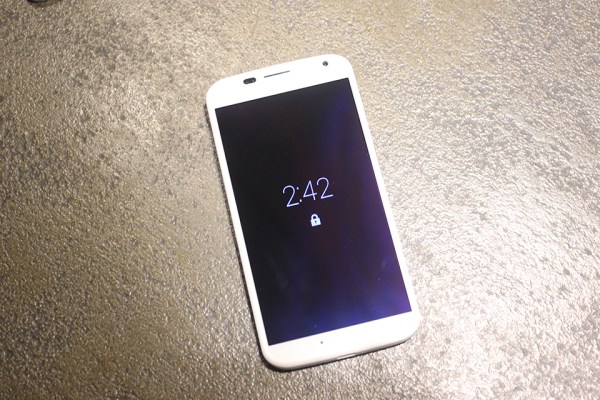Motorola unveiled its Motorola X smartphone last week, and our own Chris Velazco found the phone impressive enough. But the more I think about it, the less impressed I am by Motorola’s big brand relaunch under the Google banner. The Moto X never really excited me to begin with, and it’s likely not meant to, with a slew of options squarely aimed at shoppers who value surface-level customization over the latest and greatest specs and mobile tech. Even beyond personal appeal, though, I think the Moto X falls flat, and ultimately wastes a chance that a once-great company had to really make a dent in a market that has become somewhat boring.
Chris mentioned in his overview piece detailing the new device that Motorola’s X team was asked to describe the product they wanted to make; their answer must have been “a so-so mid-to-high end smartphone with an okay display and an old version of Android and a cheap swappable back case gimmick.” Google execs hinted that it would leapfrog the competition in terms of durability and battery life – what we get is a promise of 24 hours of usability (decent, though not world-changing if accurate), and a water-repellant coating, but no actual guarantees of water resistance.
Does it look like a bad phone? It does not look like a bad phone. The screen could be better, with 720p max resolution and pixel density of 312 PPI, compared to a whopping 441 on the Samsung Galaxy S4, but it should be fine, as long as it doesn’t have the odd colour saturation and tonal issues I’ve found to plague Motorola smartphones in the past. And it’s got Android 4.2.2, which is Jelly Bean, though not the most current version, which is a bit of a head-scratcher given that this is now a Google-made device in essence.
Chris makes much of the Moto X’s many software features, including the always-on listening mode, as he describes in our most recent Gadgets podcast. But as with most manufacturer-specific additions to Android, a lot of these seem unlikely to dramatically change anyone’s smartphone using experience. Voice commands are handy in some unique situations, but are not useful in any way when you’re actually out among humans using your phone. The one addition that sounds truly beneficial is the Active Display, which shows notifications on the lock screen. But if Google doesn’t make this native in its next version of Android OS, I’d be very surprised indeed.
Google had a chance to reinvent a brand and an entire market with Motorola, but instead we got a phone that looks to be on par with some of the better Android phones available, but not better than the best out there, like the Galaxy S4 and HTC One. It definitely doesn’t seem to have what it takes to turn around the flagging fortunes of a once-great mobile phone brand, and at $199 on contract I wonder if it’ll even be able to trade its “Made in USA” cachet for decent domestic success.
I was looking for a phoenix from Motorola after Google’s acquisition and clearing of its existing, decidedly lackluster device pipeline; what it looks like we got instead were some ashes artfully arranged in a bird-like pattern, but still subject to being blown away by the slightest gust of wind.
